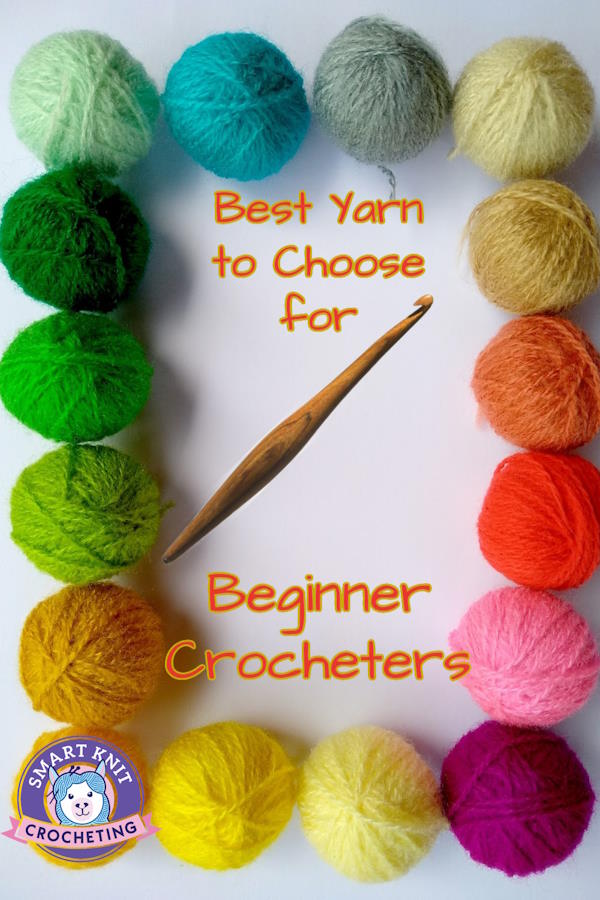- Home
- Best Yarn to Choose for Beginner Crocheters
Best Yarn to Choose for Beginner Crocheters: Top Guide 2023
Best Yarn to Choose for Beginner Crocheters, by Janice
Published 12/27/2023
Getting started with crocheting is a beautiful hobby that yields rewarding results. The yarn you choose for your crochet projects is as important as your chosen technique.
Your final product, whether a cozy blanket, warm scarf, or quaint doily, depends considerably on the type of yarn you select. This guide aims to aid you in selecting the best yarn for your beginner’s crochet journey.
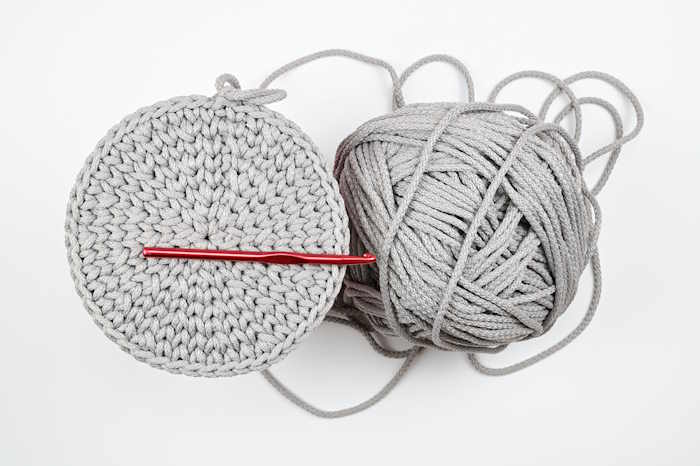
So Many Types of Yarns, Different Fibers, and a Variety of Colors
Choosing the perfect yarn is not as easy as it sounds when just starting with crochet. There are so many different types, thicknesses, and fibers to choose from, not to mention all the different colors readily available.
To add to the confusion, crochet fabric can also be created with crochet thread, cording - just about anything you can image, you can use to make a crochet design.
With so many choices and yarn brands, many beginners make the mistake of picking a colorful yarn with a novel fiber content. This is a mistake because some yarns are much easier to manage than others.
Best Yarn to Choose for Beginner Crocheters: Yarn Overview
Here is a quick overview of the world of yarns with the beginner in mind. (i.e, the guide I wish I had when I first got started)
Fiber Types
There are loads of varieties when it comes to yarn fibers.
They're generally divided into three main types:
- Natural fibers
- Synthetic fibers
- Blends
Each one is suitable for different sorts of projects and featuring different characteristics.
Natural Yarn Fibers
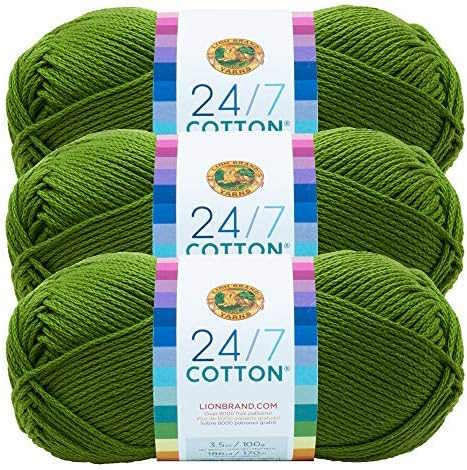
The yarns in this category come from animals (like sheep’s wool, angora, alpaca, silk) and plants (like cotton, bamboo, hemp).
This type of yarn is ideal for creating wearable crochet items like hats, sweaters, and socks, keeping you warm.
Plant fibers are generally great for household items such as washcloths, towels, table runners, and anything that needs to be washed frequently, as cotton fabrics are machine-washable.
Most animal fibers require hand laundering so wool yarn is a good wearable choice, but not a good choice if it needs to be washed frequently, such as baby clothes.
Synthetic or Man-made
Man-made acrylic, rayon, and nylon fibers. Synthetic yarns are highly durable, inexpensive, easy to care for, and come in various colors.
They're perfect for projects like toys, home décor items, and brightly colored accessories. Acrylics are an excellent choice for crocheting beginners for the reasons just mentioned.
Blends
These combinations of natural and synthetic fibers offer the best of both worlds. They maximize the benefits of both fibers. Many are machine washable, which makes them an easy choice for nearly any project.
Fiber Qualities to Consider
When starting out with crochet, you may feel overwhelmed by the array of options. Here are some essential qualities to think about:
Weight
Here I am not talking about the weight of the skein. Rather, this refers to the thickness of the yarn.
From thinnest to thickest, they’re classified into lace, super fine, fine, light, medium, bulky, and super bulky.
Beginner crocheters often find it easiest to work with medium-weight yarn (often called worsted-weight yarn) or bulky yarn, which is thicker. A discussion of yarn weights will follow below.
Texture
Texture relates to how smooth, fuzzy, or bumpy a yarn is. Smooth yarns are usually easier for beginners. Fuzzy or bumpy yarn, though fun to look at, can make it harder to see your stitches, which is important in crochet.
Novelty yarn is a term you will encounter, and that category of yarn includes a group of complex fibers that are not smooth or uniform. They may have loops, twists, or fuzzy fibers containing metallic fibers. These yarns can be challenging to use.
Color
Lighter colors are easier to work with because you can see the crochet stitches. Even if you have perfect 20-20 vision, learning to recognize and "read" your stitches is a skill that develops over time. Pastels, shades of white, or colors such as yellows, corals, and deep pinks will also work if you hate pastels or whites. Smooth-textured yarns in lightweight colors provide great stitch definition.
Stitch Definition
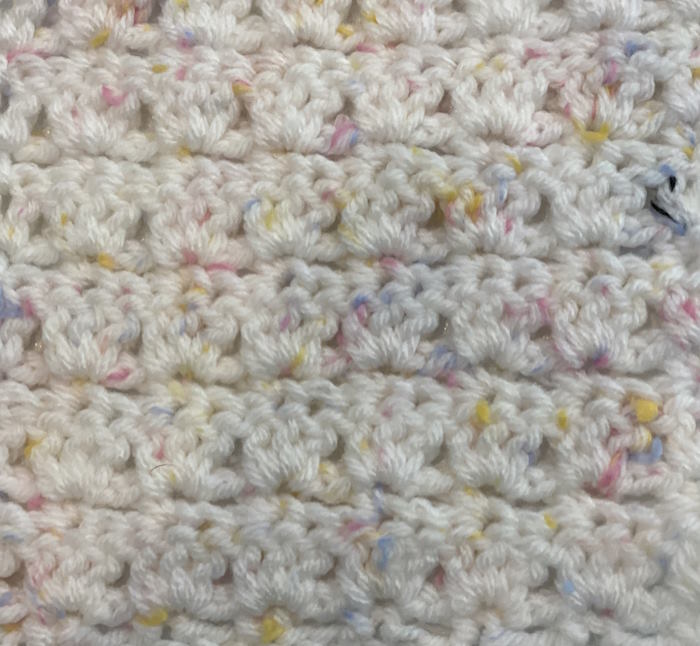
While not technically a fiber characteristic, it's worth mentioning here because it is so important for beginners.
Stitch Definition means how well you can see each stitch so that you will begin to recognize their differences. Equally important is being able to count your stitches.
Counting is vital to crochet success. If you are creating a crochet square, you want to end up with a square and not an odd-shaped piece of fabric because you forgot to count stitches and rows.
You will appreciate good stitch definitions in more complex patterns as your crochet journey progresses. It makes no sense to create a complex stitch pattern with the wrong color or texture of yarn if you can't see the beautiful stitches.
Best Yarn to Choose for Beginner Crocheters: Choose Different Yarns for Different Projects
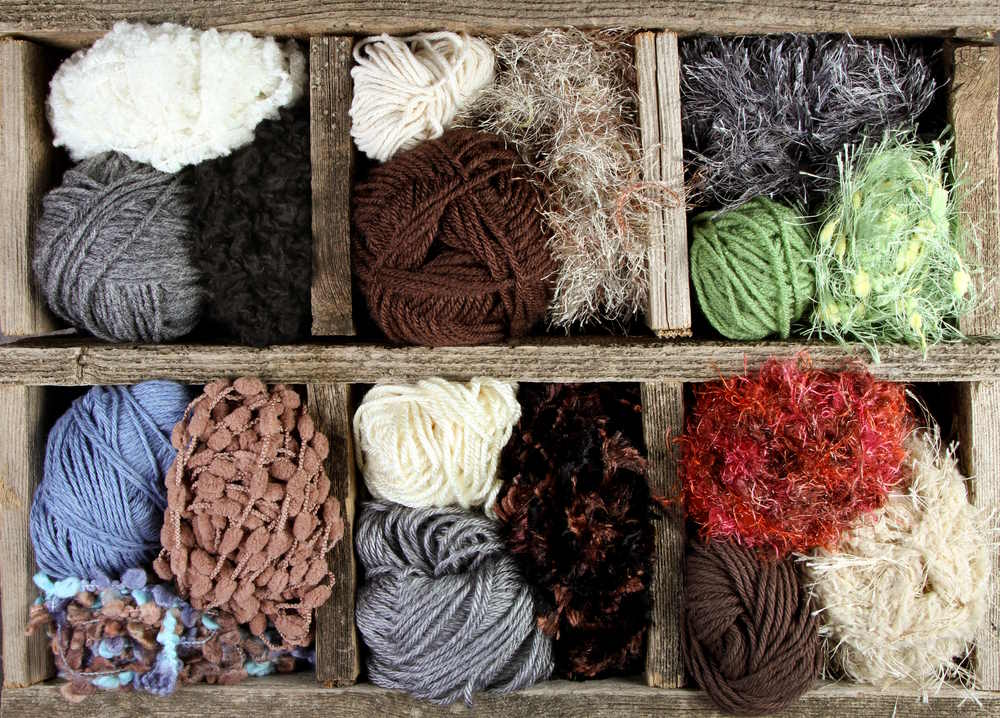
It would be wonderful if you could just select a yarn you love and use it to make anything you desire. Sadly, it's not quite that easy.
Beginners to advanced crocheters normally choose yarns based on the type of project you are making. If you are following a crochet pattern, the yarn choice is easy.
Crochet patterns always provide the brand and type of yarn used to design the project. That does not mean you must search in vain for the specific brand and type of yarn. You can substitute.
Sometimes, that is impossible, even with many online yarn sources. You also need to consider your budget. If you are starting, practicing on less expensive brands is best.
Also, if you are learning and want to practice before creating your first project, your best option is to use a synthetic, worsted-weight yarn in a shade of white (cream, beige, tan, and so forth). I will provide some options at the end of this article.
Crochet Blanket Projects
Choose a soft, comfortable blanket yarn. Acrylic and cotton are great choices because they are soft and hold up well to washing.
Bulkier weight yarns can also help your project move along faster. Wools may not be a good choice as they must be hand-washed. Baby blankets are usually made in a soft, lightweight yarn and should be made in a yarn that can be machine-washable.
Toss Pillows, Pillow Covers, Decorative Pillow Options
Similar to blankets, softness is key for pillows. You'll want a durable yarn that will hold up to use. Again a synthetic fiber in a chunky yarn weight is a popular choice because it works up fast and can be washed easily. If you want the crochet stitch to "pop" choose a light color, smooth yarn.
Washcloths
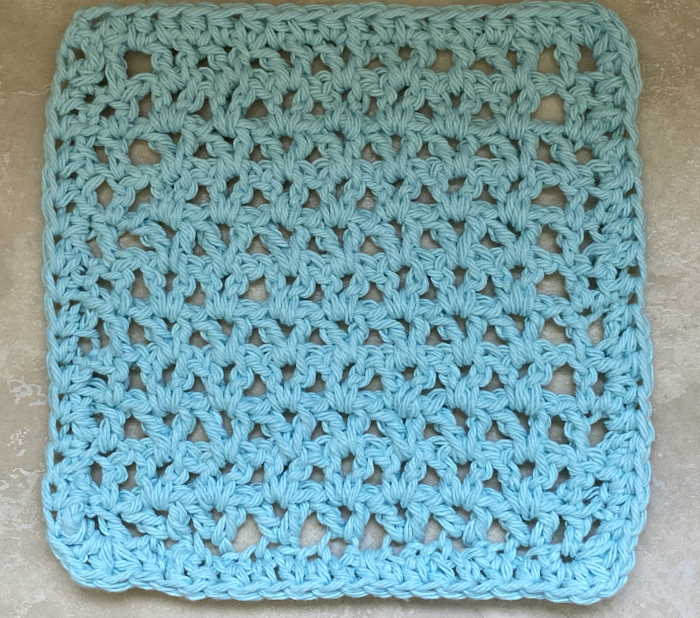
Cotton is the best yarn for washcloths and dish towels. It is absorbent, washable, and durable.
Hats, Mittens, Scarves, Cowls
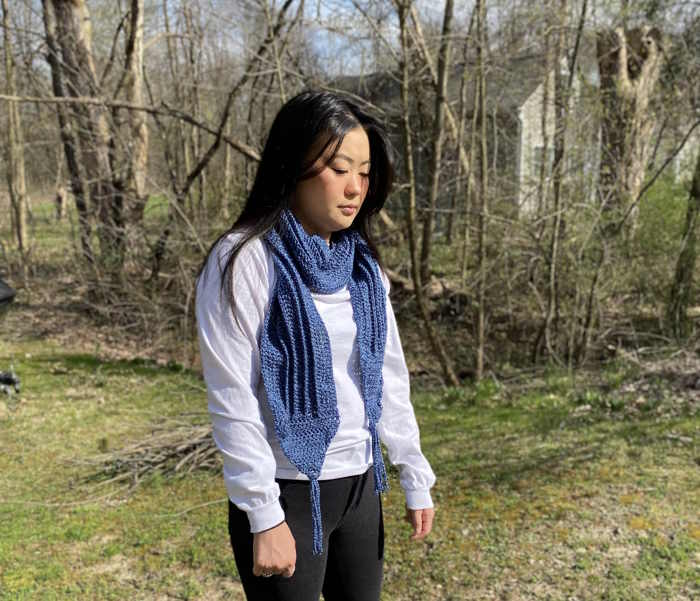
Wool and wool blends are common for these wearable items. They're warm, soft, and durable. Acrylic can also be used for its easy care. A wool blend is also a perfect choice for mittens needing frequent laundering.
Toys
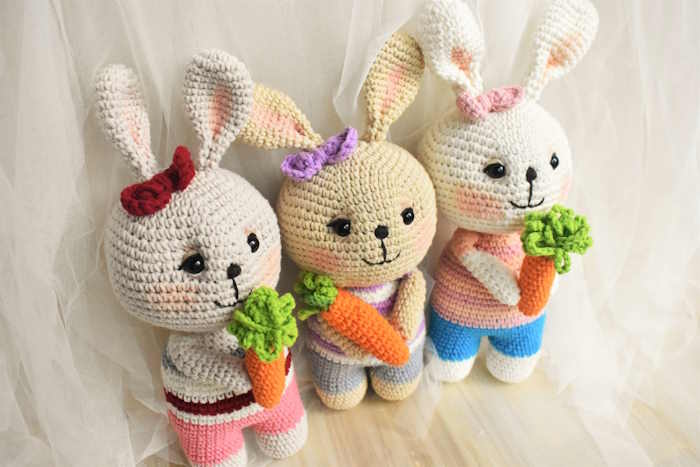 The best yarn to choose for beginner crocheters includes cotton for toys.
The best yarn to choose for beginner crocheters includes cotton for toys.For children's toys, consider safety and durability. Brightly colored acrylic yarn is a great choice because it's machine washable.
Toys are fun projects but don't get frustrated by starting your crochet adventure trying to master amigurumi, a popular way to create stuffed toys and dolls.
Matching the Right Hook to The Yarn
When you go into your favorite yarn store, you'll likely encounter rows of different yarns. You must learn how to read a yarn label to understand what to buy.
The Craft Yarn Council is credited with creating a uniform system of classifying yarns by weights, assigning names and numbers to these weights, and offering suggestions for the size of the hook to use. What does all this mean? Let's break it down into steps.
Pay Attention to Yarn Labels When You Pick the Best Yarn for Beginners
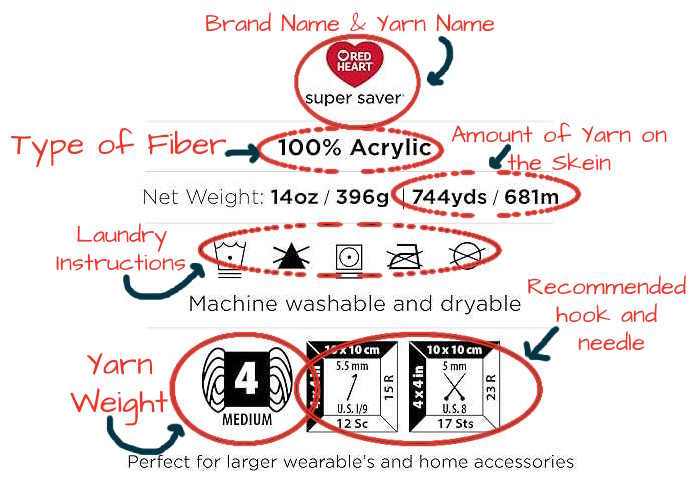
You will find valuable information on the label to help you decide what yarn to purchase.
1. Brand and Name of Yarn
2. Yarn Weight
3. Size of Hook (or knitting needle to use)
3. Laundry instructions
4. Color name and number
5. Dye Lot
6. Amount of yarn contained in the skein (in yards and meters)
7. The net weight of the skein (in ounces and grams)
I have a comprehensive article explaining each of these yarn-label items and how to use them.
Best Yarn to Choose for Beginner Crocheters: Pay Attention to Yarn Weights
Again, the Craft Yarn Council takes the guesswork out of determining the thickness of the yarn by assigning each thickness a number from 1 to 7.
Remember, the weight of the yarn refers to the thickness of the yarn, not how heavy the skein or hank is by weight. You will hear words such as worsted weight yarn, bulky weight yarn, DK weight yarn, etc.
Here is a chart that helps make this clearer.
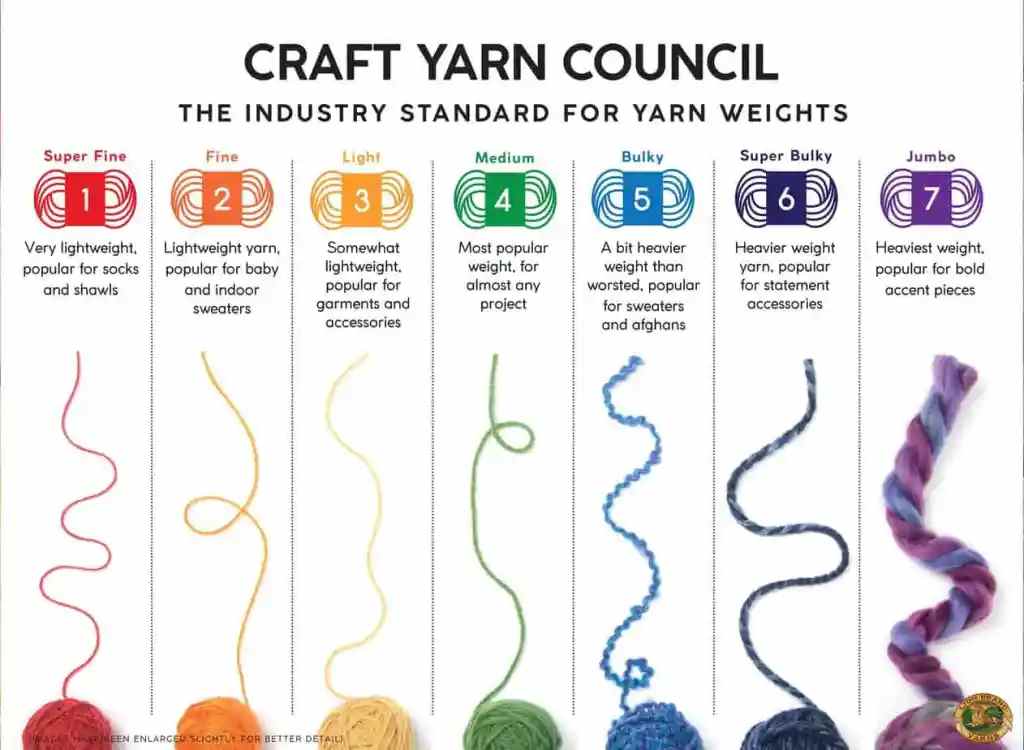
Crochet Hook Size
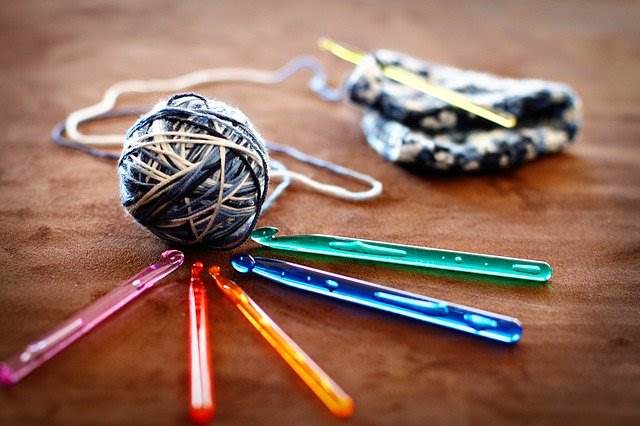
Picking the right hook is important if you want to love the project you create. Hooks come in tiny sizes for working with cotton thread, up to giant sizes you might use in a jumbo super bulky size yarn.
Hooks are sized differently depending on where you live in the world. If you are in the US, you might see hooks labeled with letters such as G, H, I, or J, to name a few.
Most of the world uses the metric system, so the hooks are labeled in millimeters. Most hook manufacturers, such as US H (5.0mm), will label their hooks with both.
You need to use a larger hook when you use thick yarns and a smaller hook size if you are crocheting with thin yarn. Before purchasing a set of hooks, read my guide to crochet hooks and choose an ergonomic crochet hook.
My Favorite Yarns for Beginners
I promised you that I would list some of my favorites so here they are:
Best Inexpensive Acrylics
For practicing techniques and stitches, a light color, inexpensive yarn is perfect. Here are the ones I've personally used and like:
- Red Heart Supersaver
- Hobby Lobby, I love this Yarn
- Yarnspirations Caron
- Lion Brand Yarn Basic Stitch Anti-Pilling Knitting
- Caron Simply Soft
I thought it might be interesting to see which yarn is the least expensive based on Amazon prices. I used the price and divided it by the yardage to see which yarn provided the best value.
Red Heart Supersaver Jumbo
$18.98/744 yds = $ 0.25 per yard
Hobby Lobby, I love this Yarn
$4.99/355 yds = $ 0.14 per yard
Yarnspirations Caron One Pound
$21.99/812 yds = $ 0.27 per yard
Lion Brand Yarn Basic Stitch Anti-Pilling
$5.99/185 = $ 0.32 per yard
Caron Simply Soft
$13.44/314 yds. = $ 0.23 per yard
Best Inexpensive Cottons
Here are some of my favorite cotton yarns:
Lion Brand Yarn 24/7 Cotton® Yarn
$4.99/165 yards = $ .30/per yard
Lily Sugar N Cream Cones
$13.63/674 yards = $ .22 per yard
Knit Picks Dishie Worsted Weight Cotton Yarn
$8.99/190 yards = $ .47 per yard
$9.29/254 yards = $ .39 per yard
Best Inexpensive Wools and Wool Blends
In my opinion, wool and other animal based yarns are the most expensive available, yet the most luxurious so don't immediately eliminate them from your choices. Here are the ones I found to be the least expensive, yet provide a great value.
Lion Brand Yarn Fishermen's Wool
$36.00/465 yards $ 0.77/yard
Lion Brand Yarn Wool-Ease
7.12/197 yards = $ 0.36/yard
Patons Classic Wool, Aran Yarn
$11.36/210 yards = $ 0.54/yard
Knit Picks Wool of The Andes Worsted Weight
$44.99/1100 yards = $ 0.41/yard
Last Words
To conclude, understanding the characteristics of different yarn types is key to successful crocheting. As a beginner, always start with something that feels comfortable to you and suits your specific project. Over time, you will naturally come to understand the nuances of each type and make decisions based on your personal preferences for each project.
Remember: crocheting is meant to be enjoyable and fulfilling. So trust your instincts, choose your yarn wisely, and don't hesitate to experiment. Happy crocheting!
